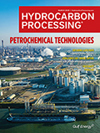Honeywell UOP opens Shreveport catalyst production line
Honeywell UOP has opened a new production line at its catalyst manufacturing facility in Shreveport, Louisiana. The $150-MM investment will enable the company to produce a new range of catalysts for the oil refiningindustry at the facility, which employs 290 people.
The new production line will manufacture catalysts for hydroprocessing, which removes impurities from fractionated crude oil and also makes transportation fuels.
"This is Honeywell UOP's fourth production line at Shreveport, giving us new capacity to meet increased demand in the industry for hydroprocessing catalysts," said Ken Stacherski, vice president and general manager for Honeywell UOP's Catalysts, Adsorbents and Specialties business. "With this and other investments we've made in the last two years, our Shreveport plant becomes one of the most modern catalyst manufacturingfacilities in the world."
Construction of the new production line began late in 2014, coinciding with several other investments, including expansion of the facility's third production line and installation of a new kiln and water clarification system.
As a result of these investments, the Shreveport plant now will be able to produce catalysts in less time while keeping inventories lower. Most of the plant's production is for export to other countries. The Shreveport facility manufactures catalysts that can be used in Honeywell UOP's Oleflex, isomerization and hydroprocessing processes, and for processing naphtha.
Honeywell UOP established the Shreveport plant in 1950 to manufacture its own proprietary catalyst designs. Today, the company also manufactures catalyst and adsorbent products in Baton Rouge, Louisiana; Mobile, Alabama; McCook, Illinois; Reggio de Calabria, Italy; Shanghai and Zhangjiagang, China; and through its Nikki-Universal and Union Showa K.K. joint ventures in Hiratsuka and Yakkaichi, Japan, respectively.
Catalysts are proprietary structures made of silica, alumina and other elements that aid in the production of specific chemical intermediates from naphtha and distillate. As pellets or powders, they are used in refineries and petrochemical plants and as part of proprietary processes to make a wide range of transportation fuels and petrochemicals.







Comments